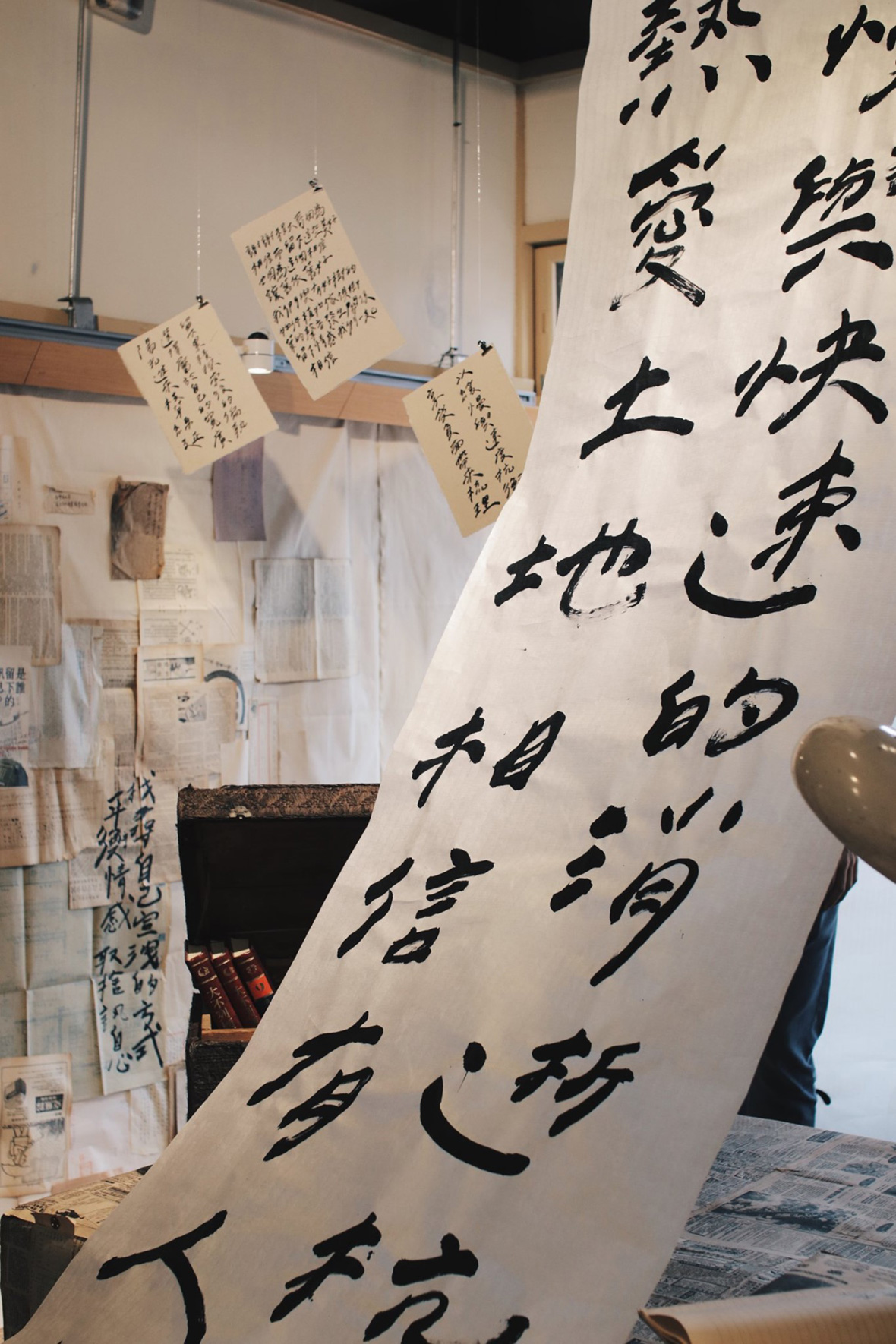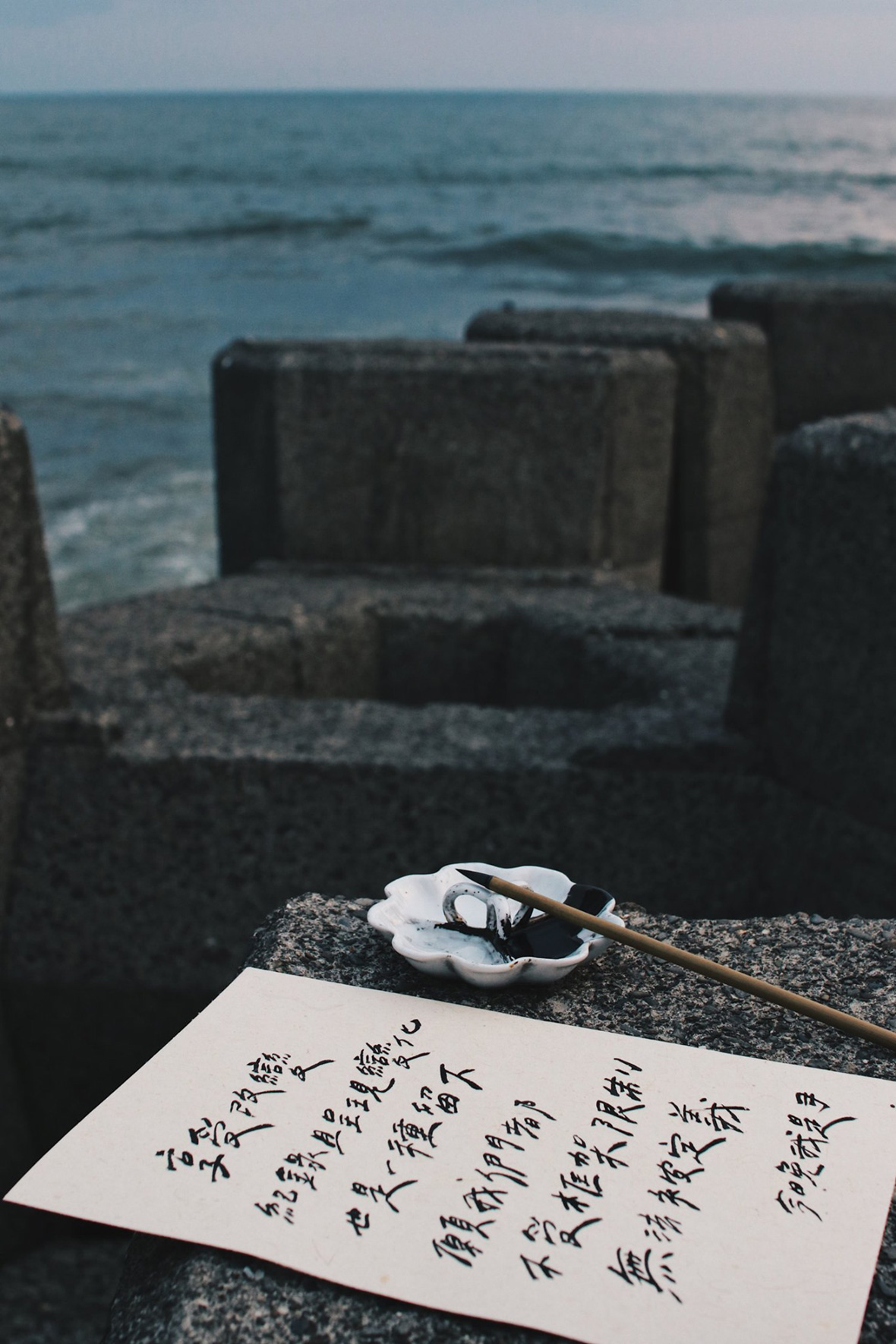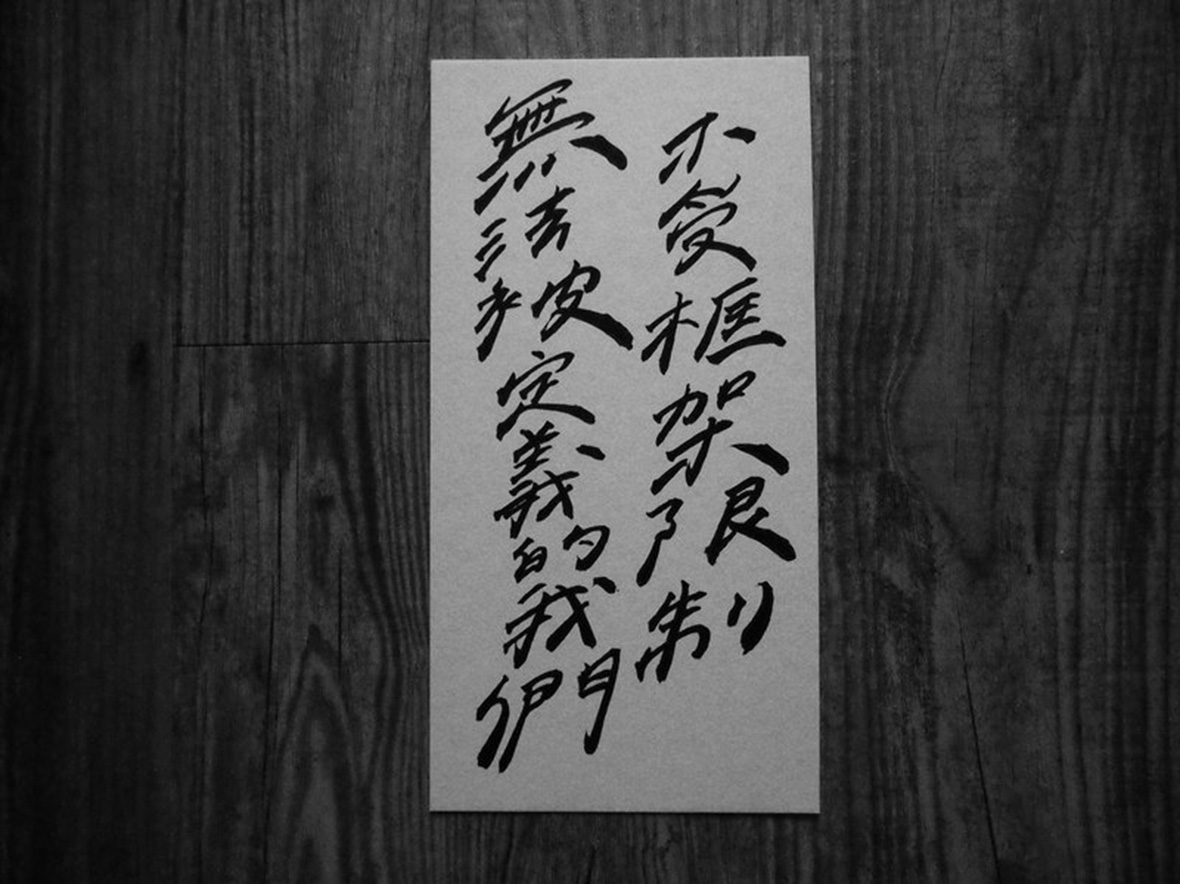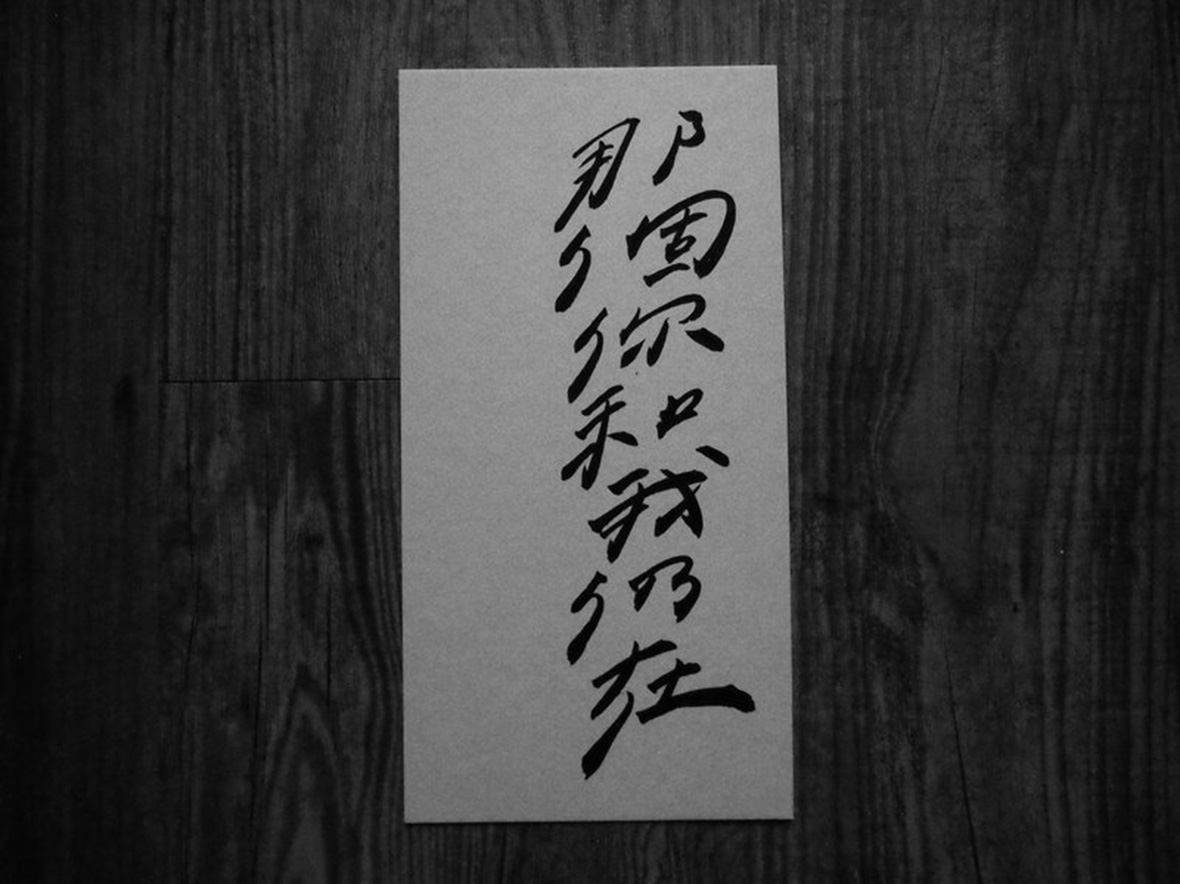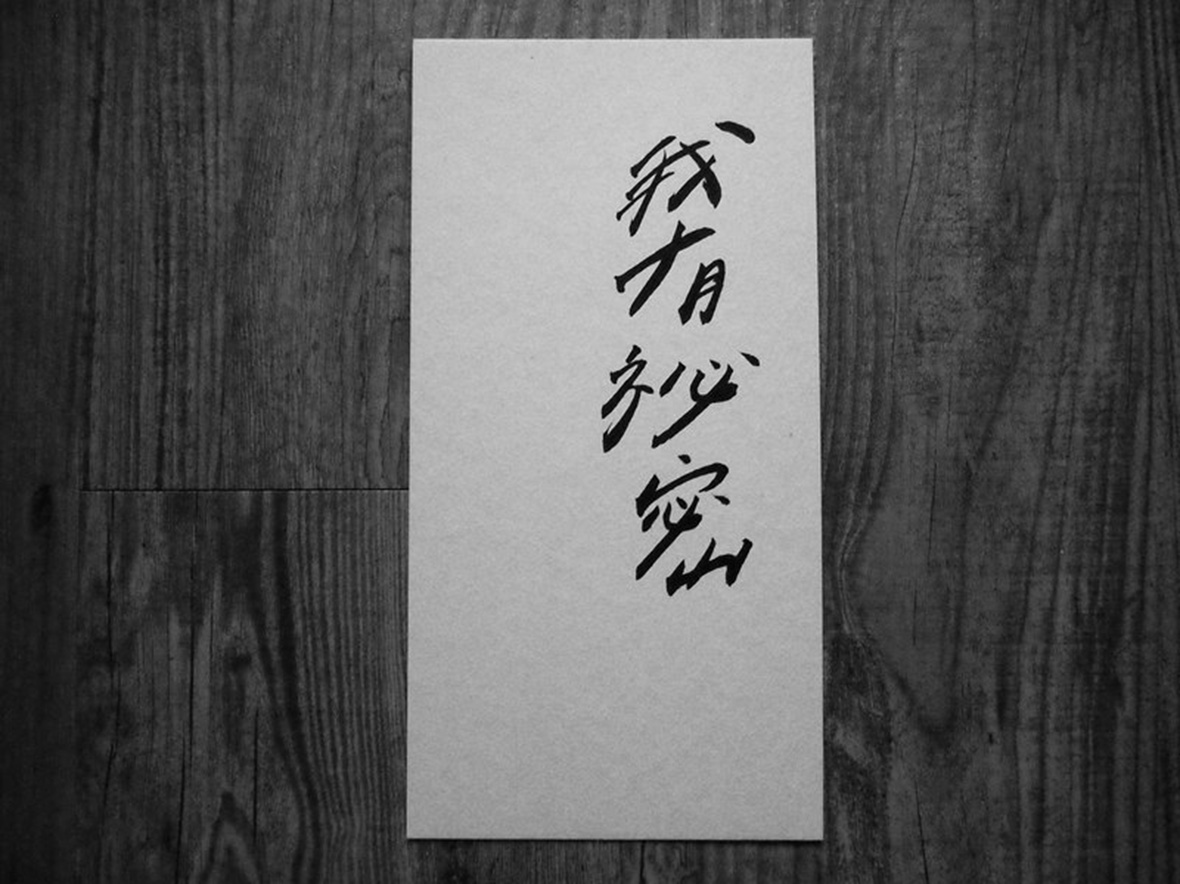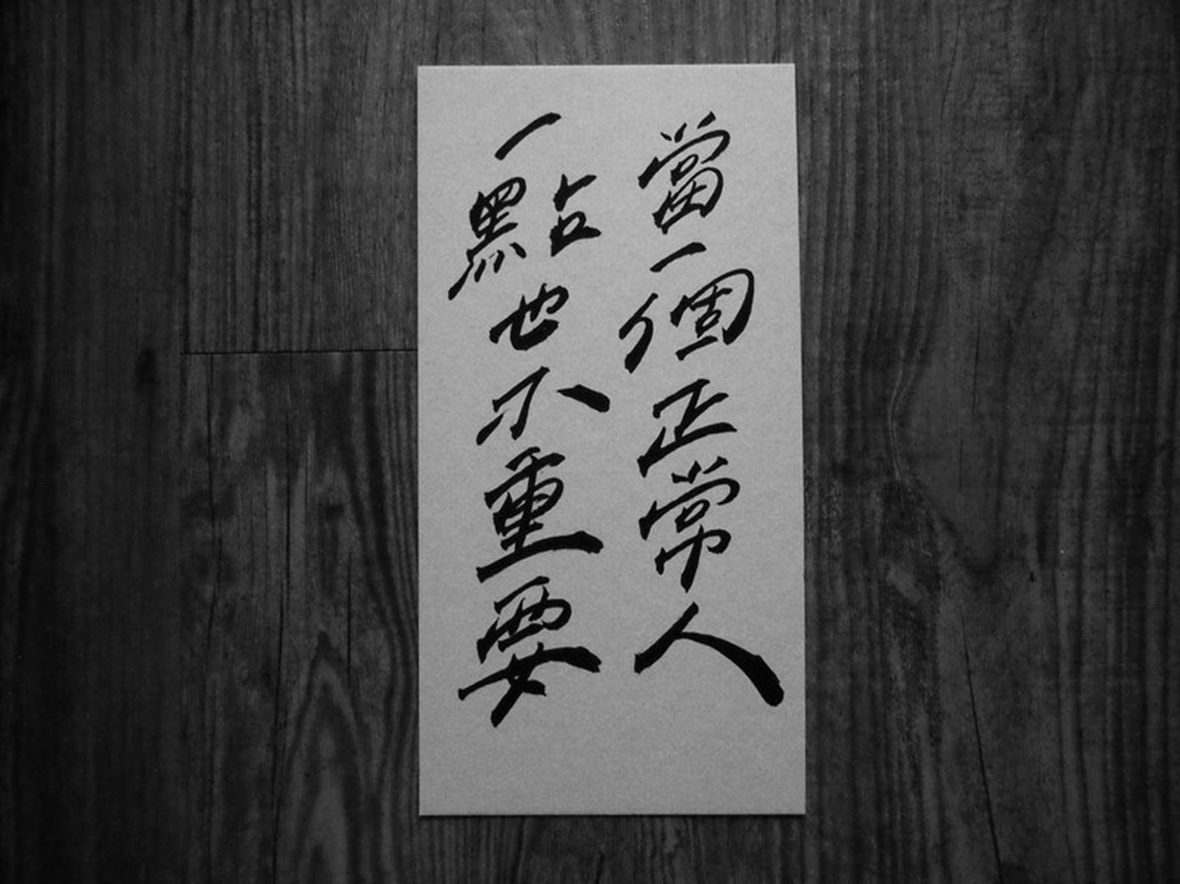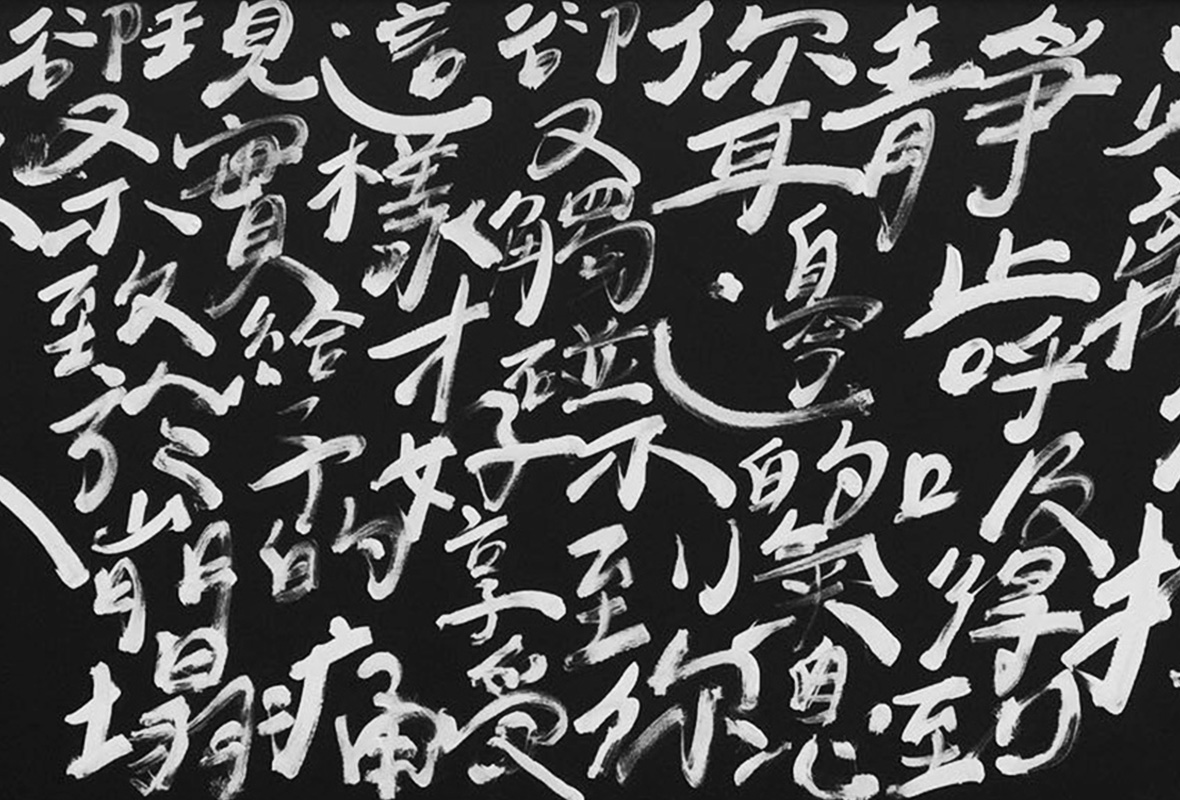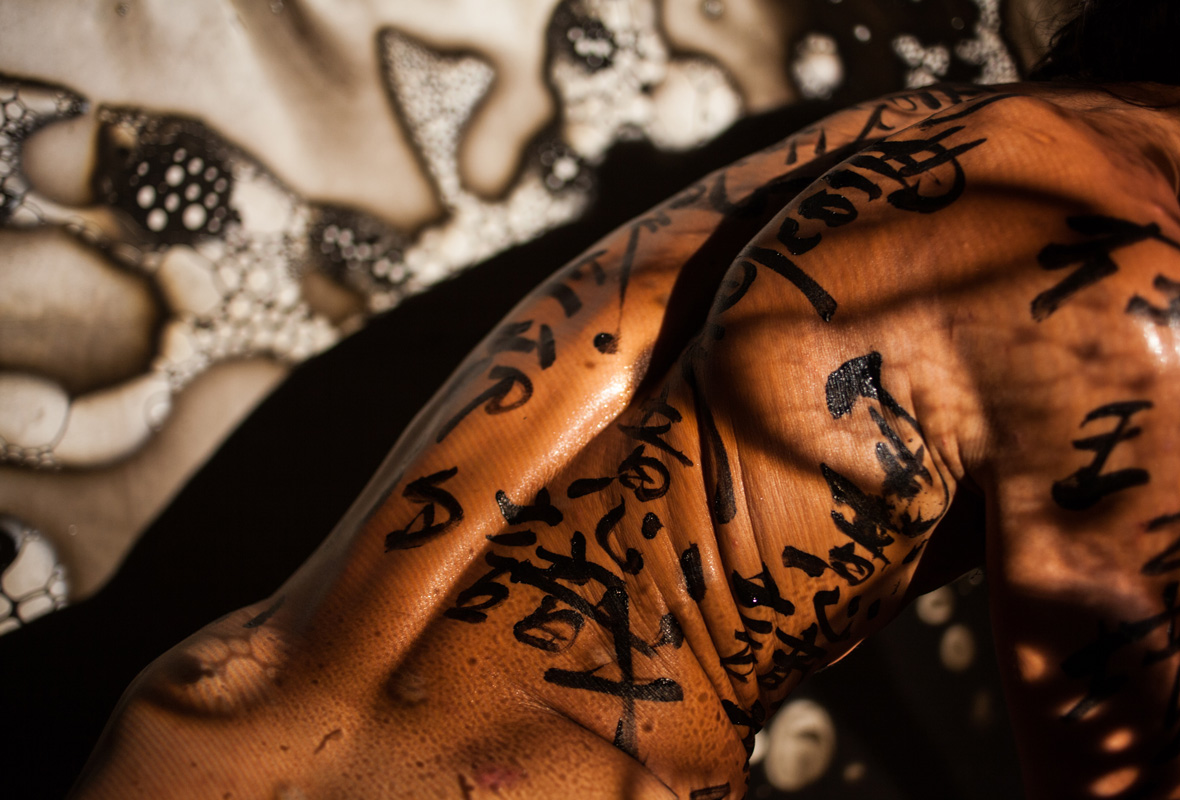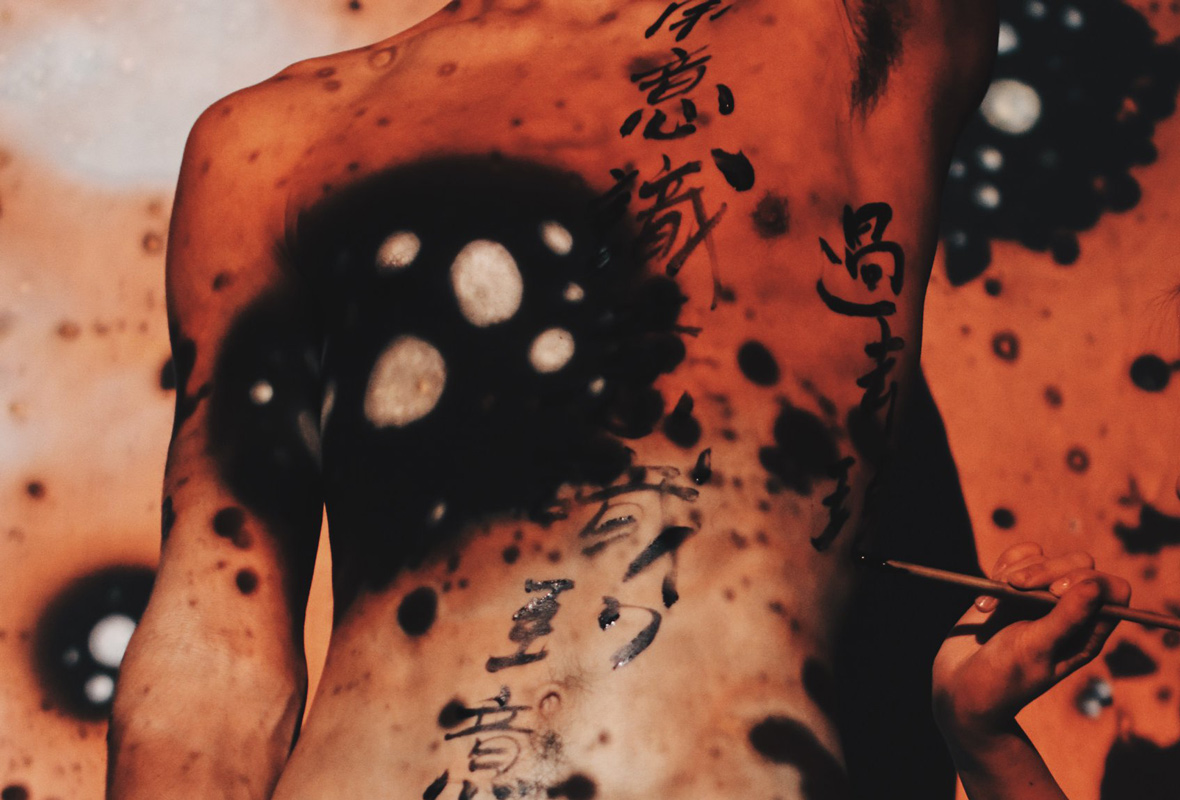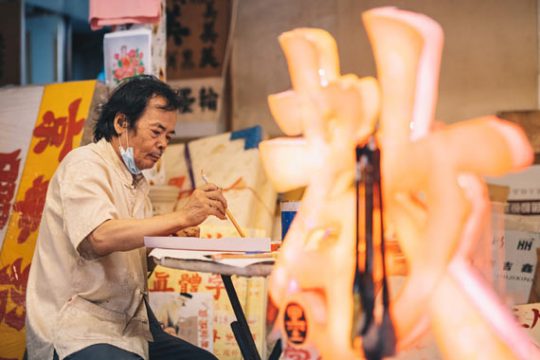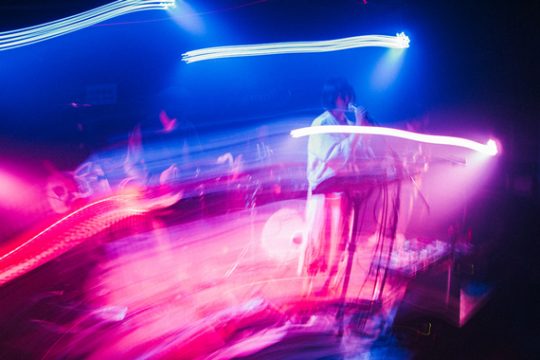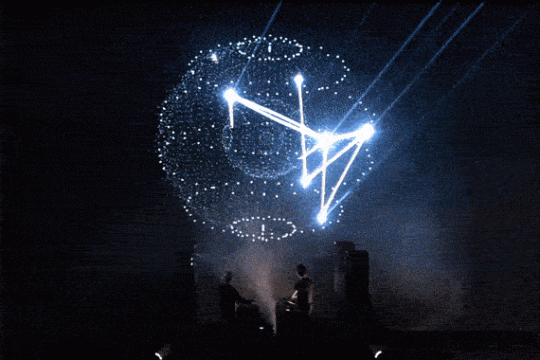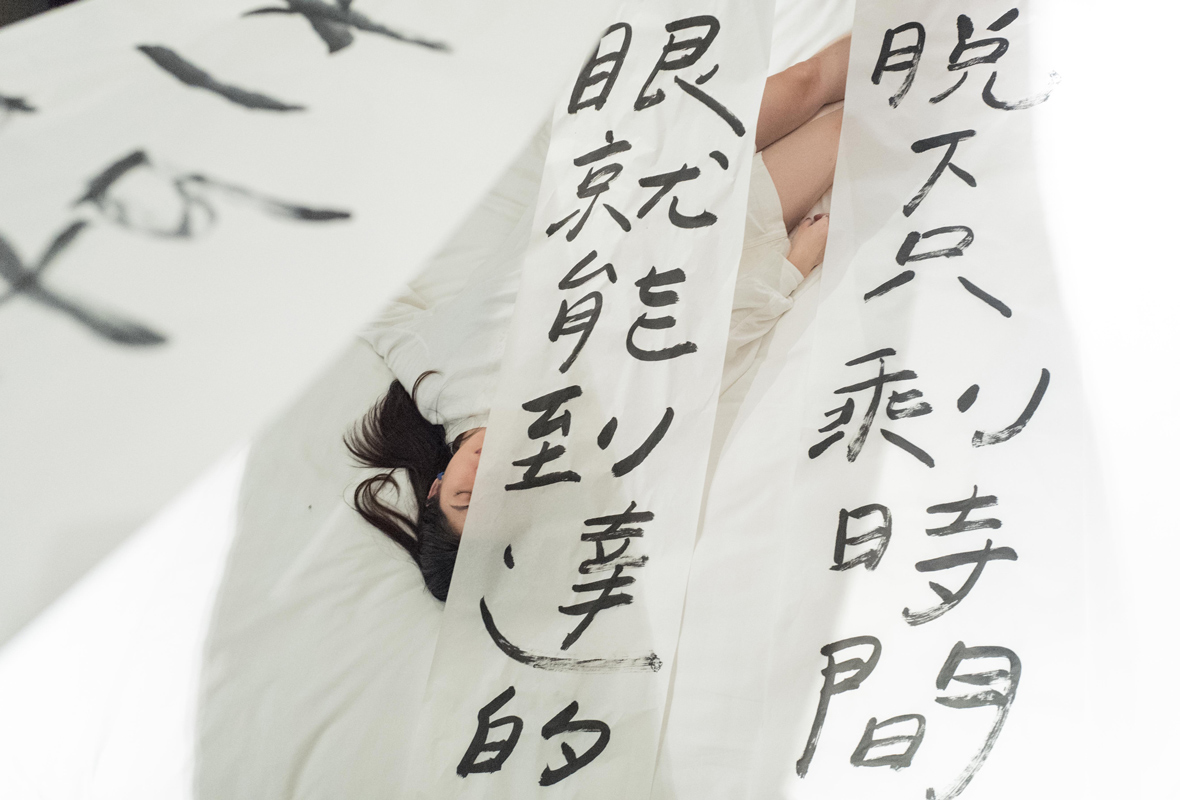
Chinese calligraphy has a certain timelessness to it, a quality that can perhaps be credited to the ink brush, a writing instrument that offers unparalleled precision and control. Even as the Chinese script evolved, brush calligraphy has stayed true as a bearer of the region’s history and culture. The visual medium has expanded far beyond literary use though, even appearing alongside a variety of contemporary creative disciplines, including graffiti, performance art, cinema, and more.
Wu Jizhen—better known as I Am Hand Tonight—is an artist who’s moving the dial of contemporary Chinese calligraphy. Her unconventional brushwork produces Chinese characters that seem to swell and dilate, lurching in unpredictable directions before coalescing into phrases such as “How have you been lately?” Under her brush, these handwritten notes are elevated to visual poetry that speaks to the precious nuances of ordinary life.
或许因为毛笔笔尖的灵活与多变,从古至今,众多文人墨客都寄情于这种艺术形式。作为文化传统一脉相承的载体,从最早的甲骨文和金文,再到之后篆、隶、草、行、楷书,书法,它的形式一直随着时代发生森罗万象的变化。在当代,书法与更多领域进行融合,人们对传统的白纸黑字上的认知正在逐渐被颠覆,你会看到香港 “九龙皇帝” 曾灶财的不拘一格、也会在日本经典奇幻电影《怪谈》中感受写满全身的荒诞景象。
台湾艺术家 “今晚我是手” (吴季祯)的字不属于任何一种书体,但却让人倍感舒适。一眼望去,那些朝着右上方倾斜的笔画,带着生活中原本应有的惬意。与其说她是书法艺人,倒不如称她是讲故事的人,一句 “你最近过的还好吗?”,一下子带阅读者进入关于生活的语境。
Wu’s works tend to center on the theme of love—between friends, between family, and between romantic partners. These stylized missives feel extraordinarily intimate, like private conversations with a trusted confidant. Everything is written with sincerity. “All of my quotes are based on my own life events,” Wu says. “But my hope is that viewers of my work can find resonance based on their own past experiences.”
亲情、友情、爱情、甚至是对待世界的情绪都在 “今晚我是手” 的笔尖流转,一个 “情” 字贯穿在她的作品中。她的作品通常没有大量的篇幅,但如同酒桌上与交心朋友在耳边的私欲。字里行间充满了真挚的细腻,好像每一个人都能在她的字中带走一句心里话。她说:“我写的每句话背后都存在一个真实故事,我希望你能藉由我写的字,联想到你的故事,这是我写字的初衷。”
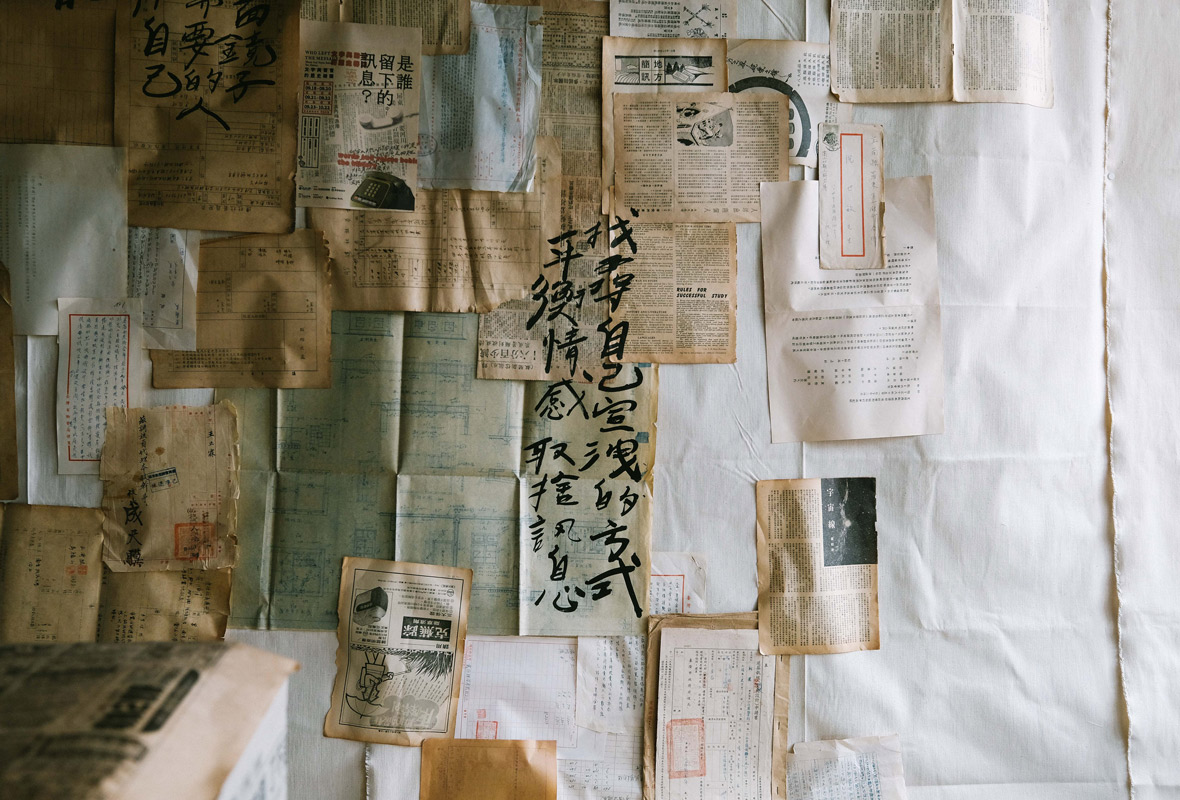
Like many kids, Wu kept a diary. In many entries, she details the calligraphy classes she was forced to attend throughout elementary school and the teachers who berated her for her sloppy writing. Little did she know, the unruly brushstrokes that she was scolded for would become one of the most beloved aspects of her art decades later. Today, her diary-keeping habits have persisted, and the random musings that she jots in her journal often serve as the basis for her calligraphy art.
与大多数孩子一样,吴季祯从小学时期便有了记日记的习惯,也曾在小学学过整整六年的书法,却因为写不出正统的字体而经常被长辈嫌弃字丑;长大后,吴季祯依然坚持手写日记的方式,她的很多作品都会从日记中节选。而往日里达不到长辈标准的字,在如今受到很多人关注。她认为笔墨只是一种媒介,希望更多人能关注内容和手写本身。
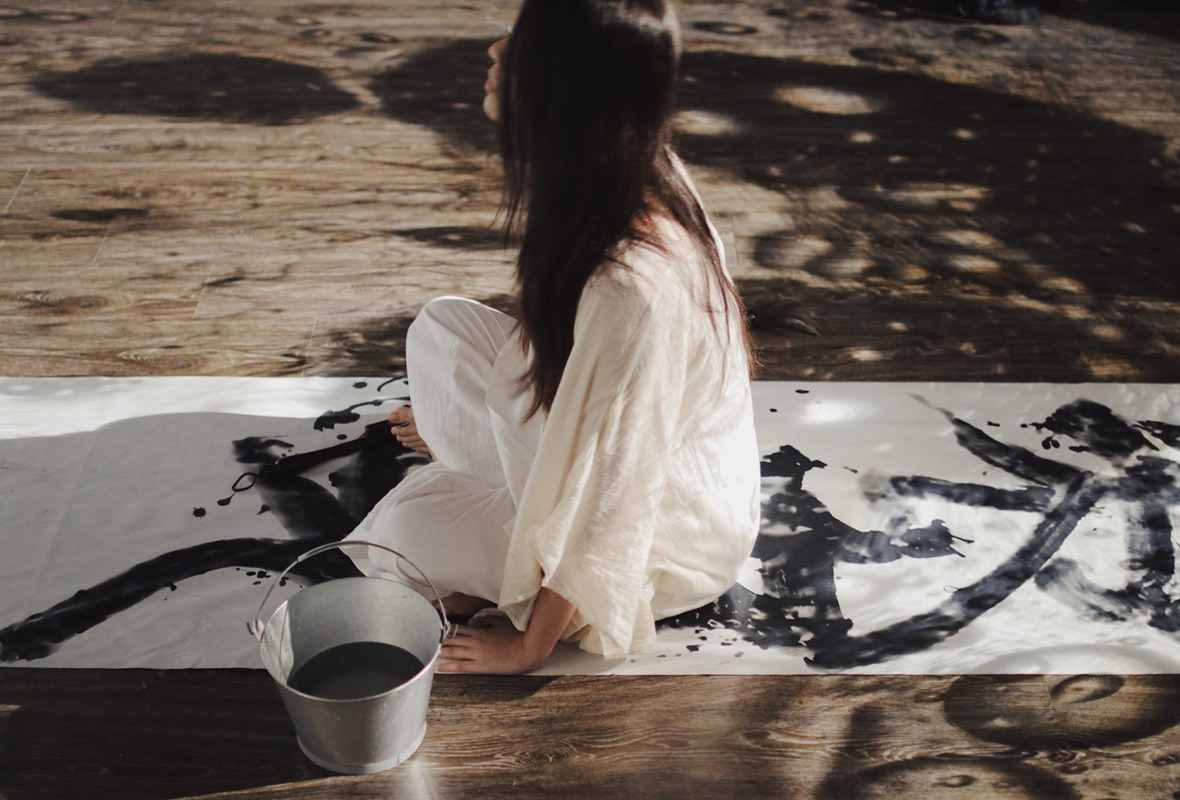
Wu believes in a slow and mindful lifestyle. Setting aside personal time to enjoy life’s little moments is incredibly important to her, and her pivot from photography to calligraphy is the result of this belief. With photography, she often found the creative process to be overly rushed. Hurried shutter clicks were hardly suitable for recording the minutiae of life, she thought, and so, in her search for a “slower” creative endeavor, she turned to calligraphy.
平日里,吴季祯的生活节奏并不快,她希望把大部分时间浪费在自己身上,慢慢体会生活中的点滴。而在写字之前,吴季祯曾是一名摄影师,大部分摄影作品也同样关于生活。但她认为摄影记录的方式太过于快速,按下快门倒不如一笔一画体会记录的过程。因此,每当看到她的文字,你或许会不由得放慢步伐,把关注点放情绪的私酿上。

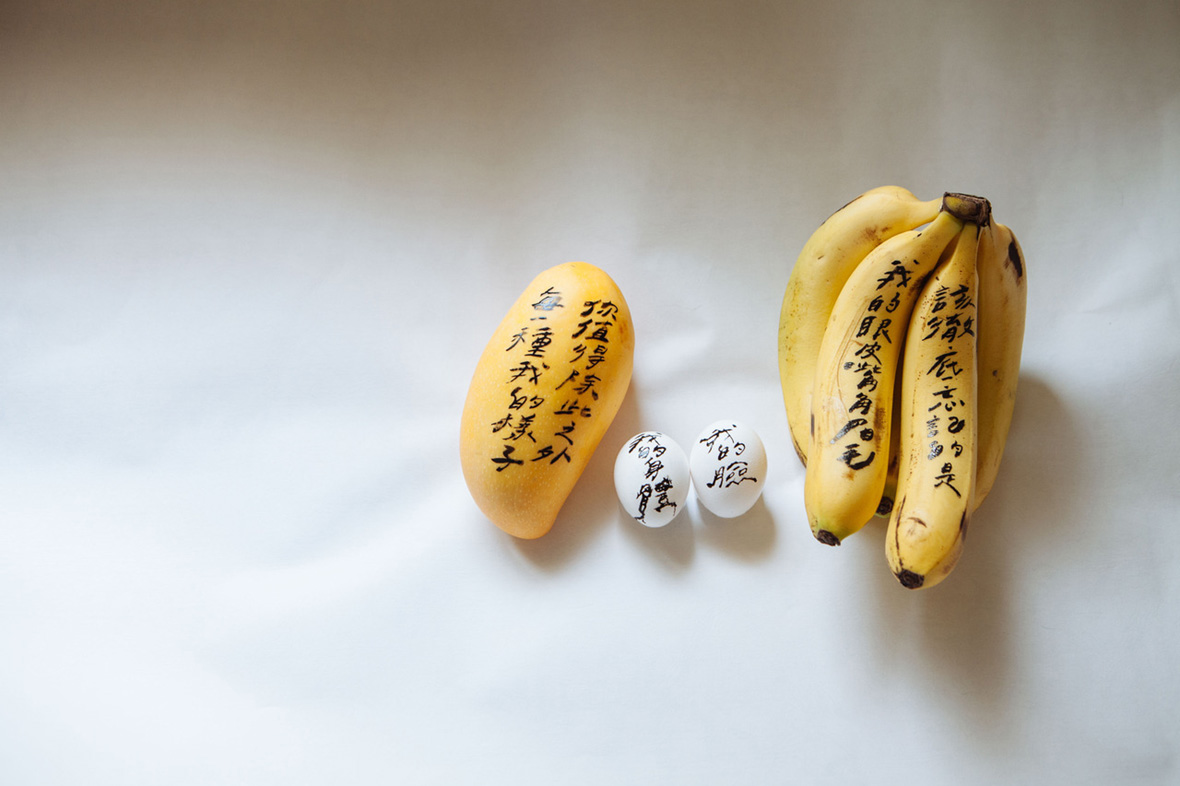
Contemporary calligraphy has long outgrown the confines of ink and paper, and Wu is fully embracing the changes. So far, she’s written on metal roofing panels, walls, and glass—she’s even written on fruit and human bodies.
In 2019, as part of the Tua-Tiu-Tiann International Festival of Arts, she participated in a multimedia project where she inscribed freehand calligraphy directly on a performer’s nude torso. “My works have always revolved around interpersonal relationships, so to put these words on human bodies felt fitting,” Wu says. “When brush meets flesh, a bond develops between the words and the person. It’s a completely different feeling from writing on paper.”
当代文字的表达方式早已不仅仅局限在白纸黑字,吴季祯的创作中同样如此。在吴季祯过往的作品中,她的创作媒介从纸发展到生活中的各个方面:屋檐、墙壁、水果、人体等等。在 2019 年大稻埕国际艺术节《流体光场》活动中,吴季祯甚至与油水投影与当代肢体艺术相互合作,带观众在现场展现自由书写的魅力。她说:“人与人之间的关系一直是我文字创作内容的主轴,所以在人体上写字对我来说是十分慎重的。当毛笔接触到人体,在某种程上是人与字的另一种 ‘结合’ 的方式,与在纸面上书写有着完全不同的感受。”
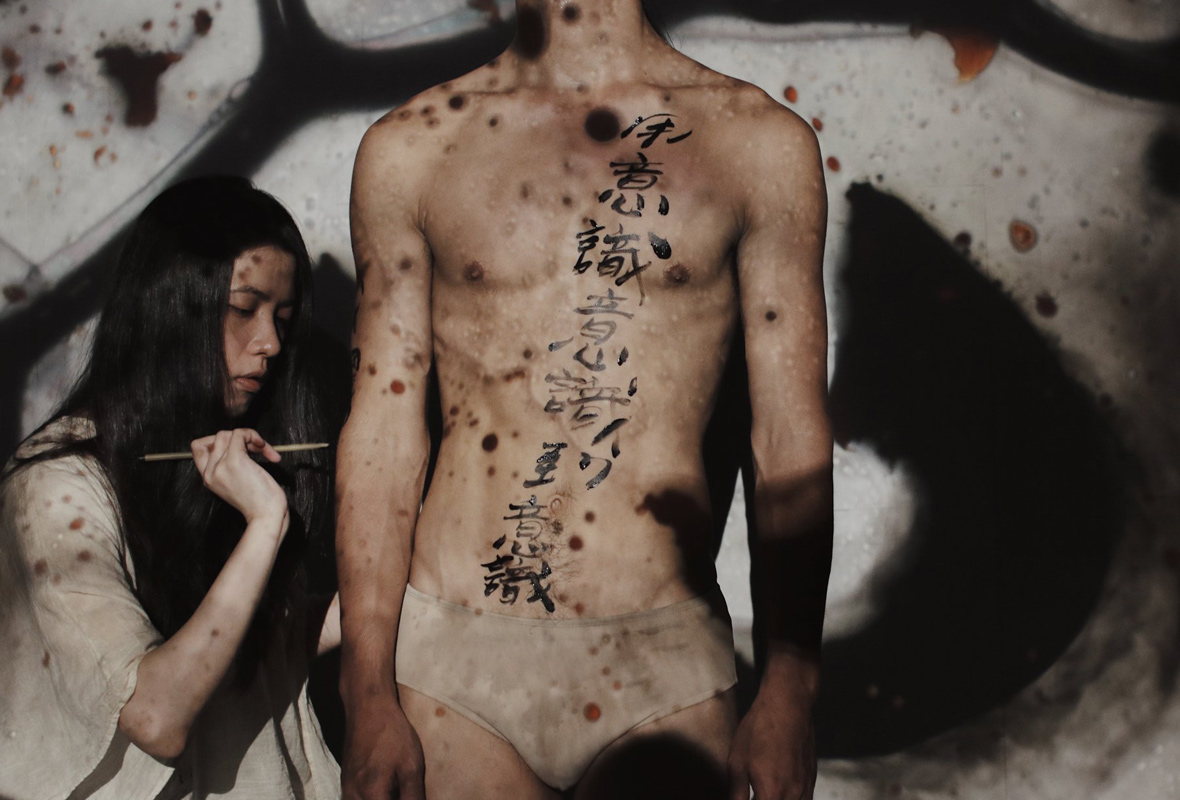
With the evolution of calligraphy and its integration with other various creative disciplines, standards of traditional Chinese calligraphy can no longer serve as an accurate barometer for what is “good” calligraphy. Wu believes that in this digital age, it’s important to rework and refresh traditional art forms like brush calligraphy to keep them relevant, even though it may not be to everyone’s tastes. “Art and man are similar in that both are not always binary,” she says. “It’s not always necessary to categorize things. I want people to see my works as they are, but interpret them in their own way. Their own experiences will dictate their understanding of it.”
当文字如同流水穿梭在各领域之间,古老的书体早已不是衡量好坏的标准,毛笔字在如今科技时代又或许拥有更多含义。吴季祯认为:“。对我而言,智慧型时代之后仍维持大量书写,算是一种疗愈自己的方式吧。而作品跟人一样都会时好时坏,最好的方式就是不要去定义。我希望每个人都对我的作品有不同的解读,大家会依自己的生命经验去解读我写的每一段话。”
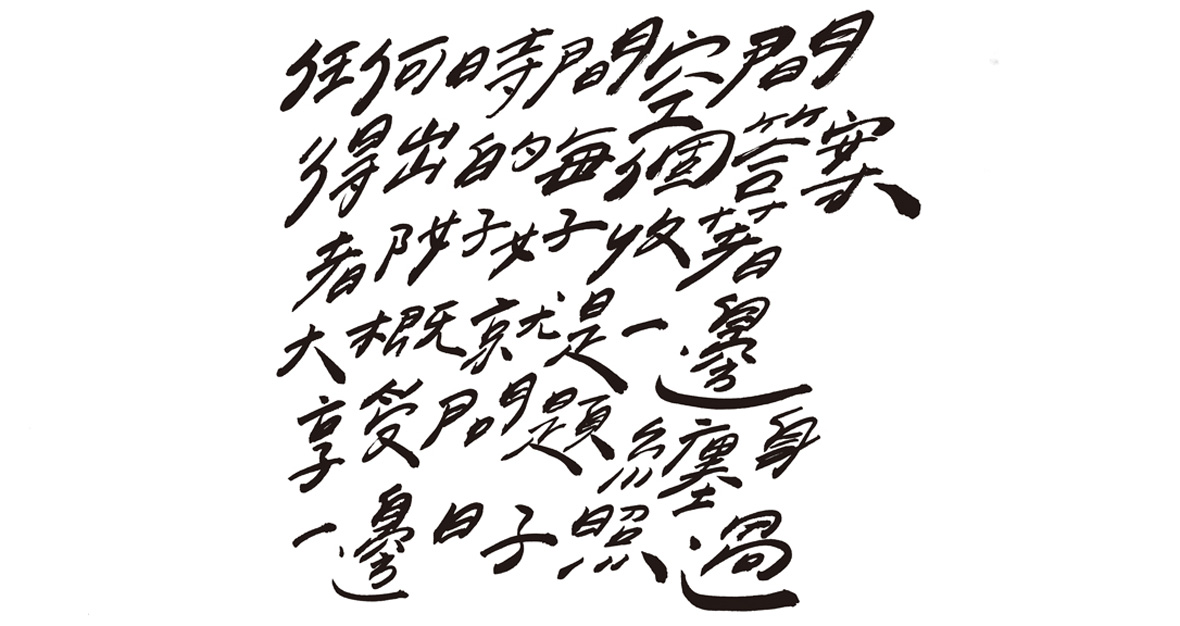
Like our stories? Follow us on Facebook and Instagram.
Instagram: @iamhandtonight
Facebook: ~/iamhandtonight
Tumblr: iamhandtonight.tumblr.com
Contributor: Pete Zhang
Images Courtesy of I Am Hand Tonight
Instagram: @iamhandtonight
脸书: ~/iamhandtonight
Tumblr: iamhandtonight.tumblr.com
供稿人: Pete Zhang
图片由今晚我是手提供

